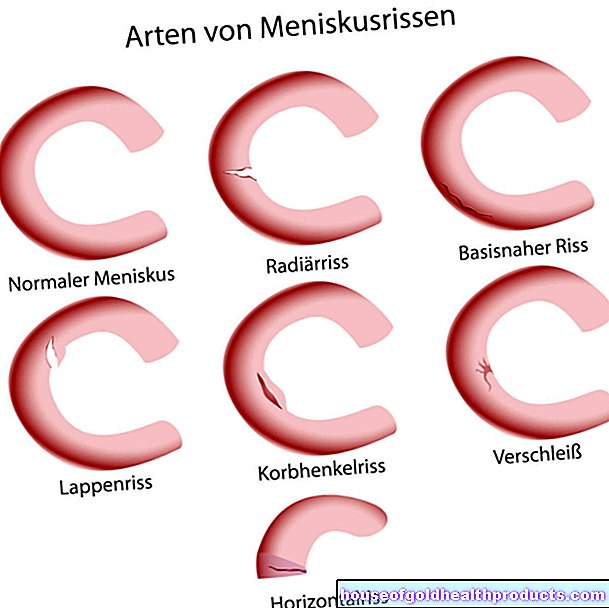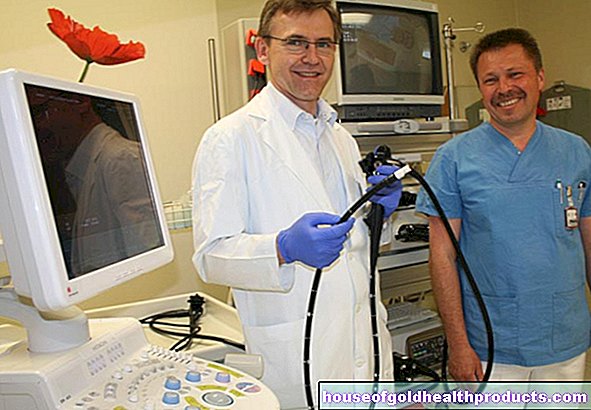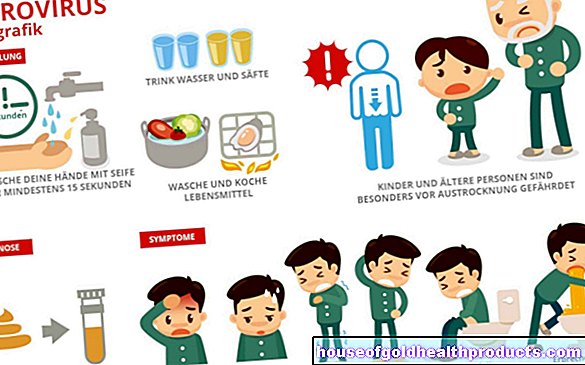OP: Without exercise on the inner ear
Lisa Vogel studied departmental journalism with a focus on medicine and biosciences at Ansbach University and deepened her journalistic knowledge in the master's degree in multimedia information and communication. This was followed by a traineeship in the editorial team. Since September 2020 she has been writing as a freelance journalist for
More posts by Lisa Vogel All content is checked by medical journalists.What I am allowed to try out today could soon become an integral part of the training for doctors for complicated interventions: an operation that feels lifelike - even if it is not.
The milling machine buzzes, and I'm about to attach it to the skull bone and begin my first operation. An operation on the inner ear: I should create space in the bone for a so-called cochlear implant - without any prior knowledge.
I carefully press the milling cutter against my skull. A slight turn with the surgical tool is enough and I slip off and land with the burr in the ear canal. A serious mistake - but here on the “HandsOn.surgery” surgical simulator of the Fraunhofer Institute it can be got over. The operation is not real. My heart is pounding.
"The procedure should feel really real"
"That is exactly what we want to achieve, the procedure should feel really real," says Dr. Daniela Franz. The bioinformatician is part of the Integrated Circuits (IIS) team at the Fraunhofer Institute that developed the prototype of the operation simulator. In the future, surgeons should be able to practice tricky interventions on such a device under realistic conditions.
Exercise opportunities for surgeons have so far been limited: "The surgical techniques and the feeling for the operation can be learned on models, for example made of plaster," says Franz. But once milled incorrectly, the model or the corpse is unusable. "Then a few hundred euros are gone."
The implant needs space
A cochlear implant is a hearing aid in which an electrode is inserted directly into the cochlea. The implant needs space in the temporal bone, a section of bone behind the ear. Tricky, because two nerves run within the bone - invisible to the surgeon. If the surgeon reams too deep, he can injure it. "If you can see the nerves, it's already too late," says Daniela Franz. One-sided facial paralysis or the loss of the sense of taste would be the consequences.
The procedure requires practice. So, off to the simulator: The milling machine is heavy in your hand. “It feels like a real surgical milling machine,” the developers assure me. The tool hangs on a robotic arm.
I can't see my hands - when I look down I only see a mirror. It reflects a three-dimensional image of the bone that comes from a screen attached above. This setup simulates the view through an operating microscope. The haptic arm on which the milling machine hangs transfers the movement of my hand under the mirror into the digitally generated image.

Virtual bone resists
Suddenly I hit the bone with the milling cutter - paradoxical, because there is nothing under the mirror, apart from my hand and the tool. “The force feedback arm is the most important part of the simulation,” explains Volker Bruns, head of the research group. It imitates the resistance of the bone. This actually makes it feel like I'm driving the milling head over an uneven surface.
The milling machine runs, even with sound. The simulator can imitate two different types of milling. First, I'll try a diamond drill. Only slowly does he wear the bone. "You have to get the hole in the bone bigger," says Franz, who is watching my work critically.
Then the milling machine gets stuck
So the other attachment has to be found, a few clicks on the screen and I continue milling with a round drill. "It has the right edges at the front, it takes away a lot of material," says Thomas Eixelberger, developer from the project team. But the milling head gets stuck in the skull bone and I can't get any further. “You have the same problem in the real operating theater,” says my instructor. To get the milling head out again, I need a sure instinct.
Injury to the nerve? Game Over!
At some point I widened the hole in the bone to the size of a two-euro coin. The milling work is now complete. Thomas Eixelberger clicks a couple of times on the touchscreen that controls the simulator, and I can now relive my "operation" in an animation - including slipping into the ear canal.
This quick feedback is an advantage of the training system. Resident doctors can practice the procedure and transmit the data virtually to their senior physician. He then evaluates the work. In addition, the simulator records all interventions by a surgeon, so you can track your progress.
After a scrutiny, the experts agree that I have to continue practicing before I can see a real patient. In the future, this assessment should also be made by the program itself. “We are currently working on a rating system,” says Eixelberger. There should then be points for the milling work. When a certain number of points is reached, a new level will be unlocked. "If you hit the nerve, it means: Game Over," says Eixelberger.
From level to level
For beginners - like me - the two nerves within the bone are highlighted in color. You should learn where they run and where the milling machine can start. In the next level, this support would be omitted. Step by step, the intervention should become more realistic.
The goal is for doctors to be tied to the device, like a mobile game. “It's called a serious game. Within the clinic, you could set guidelines in which period you should reach which level, ”says Daniela Franz.
From the milling cutter to the scalpel?
So far the simulator is a prototype. The scientists at the Fraunhofer Institute are looking for partners to develop it further until it is ready for the market. Possible buyers are clinics, organizers of surgical training courses and medical technology manufacturers. The unit price depends on the detailed product specification, but would be in the mid five-digit range for this prototype.
So far, only the surgery on the skull bone has been simulated. But the possibilities are diverse. Another device is currently being developed at the East Bavarian Technical University of Regensburg, on which operations with a drill on the metacarpal can be practiced. Operations on other parts of the body and with other tools are also conceivable, such as a tracheal incision. For now, my experience with the milling machine is enough. It's hard to imagine what damage I could do with a scalpel - purely virtually, of course.
Tags: skin toadstool poison plants alternative medicine





























